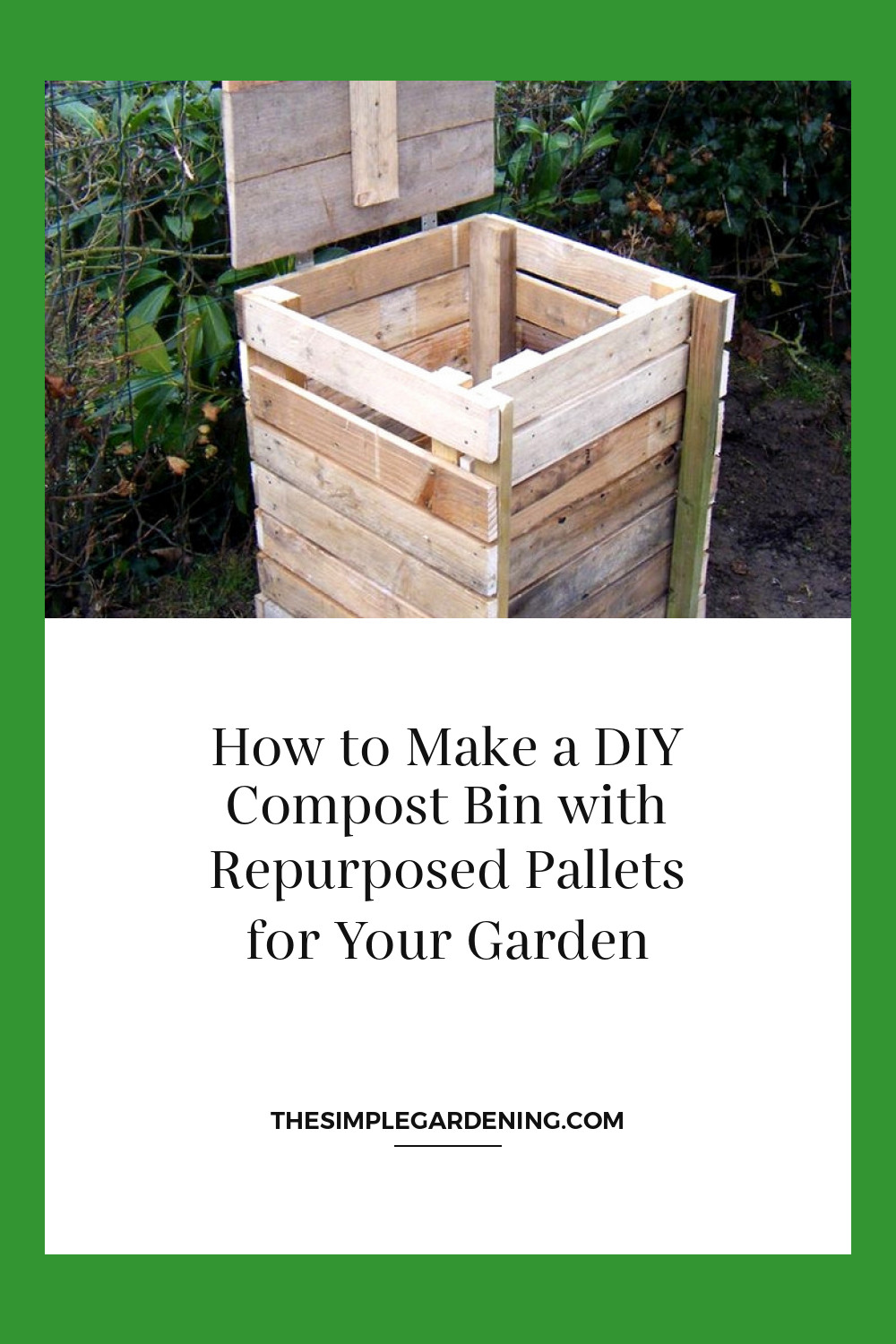Upcycled gardening is all about creativity and sustainability. It’s an innovative approach to gardening that involves reusing and repurposing materials that might otherwise end up in a landfill. By transforming these items into functional and beautiful garden elements, you not only save money but also contribute to a healthier planet. In this article, we’ll explore the many facets of upcycled gardening, focusing on the practical and environmental benefits of using shipping pallets for compost bins.
Benefits of Upcycling in Gardening
Upcycling in gardening offers numerous advantages, from environmental to economic benefits. Here’s a closer look at why you should consider incorporating upcycled materials into your garden:
Environmental Benefits
- Waste Reduction: Diverts waste from landfills, reducing environmental pollution.
- Resource Conservation: Saves raw materials and reduces the need for new resources.
- Reduced Carbon Footprint: Lower energy consumption in production and disposal processes.
Economic Benefits
- Cost Savings: Repurposed materials are often free or inexpensive.
- Low Maintenance: Upcycled materials are typically durable and require minimal maintenance.
- Accessibility: Many upcycled materials, like pallets, are readily available.
| Benefit | Description |
|---|---|
| Waste Reduction | Diverts waste from landfills, reducing environmental pollution. |
| Resource Conservation | Saves raw materials and reduces the need for new resources. |
| Reduced Carbon Footprint | Lower energy consumption in production and disposal processes. |
| Cost Savings | Repurposed materials are often free or inexpensive. |
| Low Maintenance | Upcycled materials are typically durable and require minimal maintenance. |
| Accessibility | Many upcycled materials, like pallets, are readily available. |
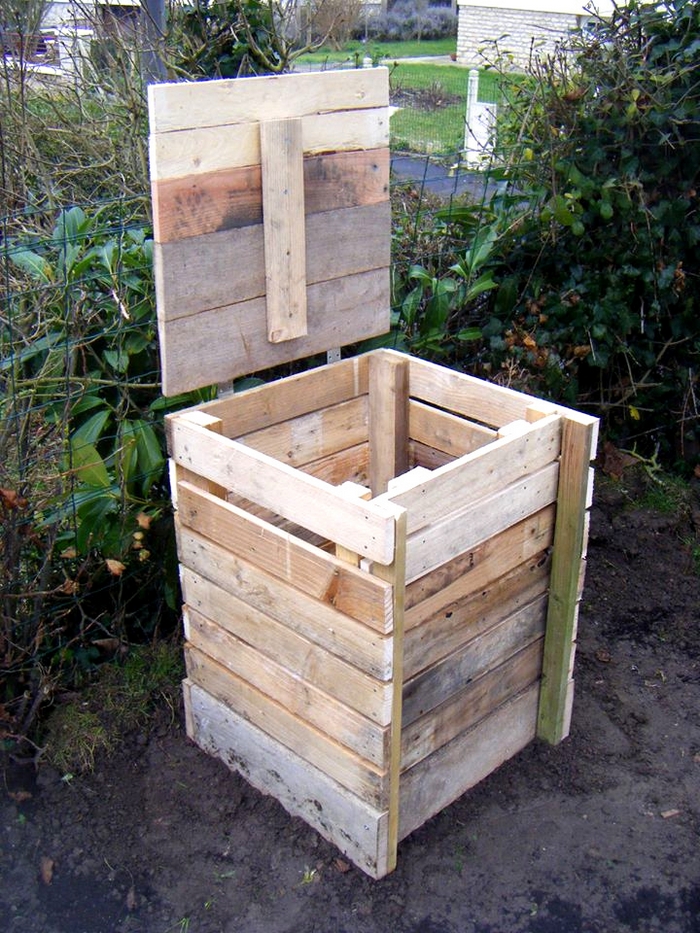
Source Image: project.theownerbuildernetwork.co
Environmental Impact of Repurposing Materials
Using upcycled materials in your garden can significantly impact the environment positively. Here’s how:
Reducing Waste
By repurposing items like shipping pallets, you prevent them from ending up in landfills where they would contribute to waste and pollution.
Conserving Resources
Repurposing materials means fewer resources are needed to produce new items, conserving raw materials and reducing energy use in manufacturing processes.
Lowering Emissions
Upcycling can help lower greenhouse gas emissions associated with the production, transportation, and disposal of new products.
| Impact | Explanation |
|---|---|
| Reducing Waste | Prevents materials from ending up in landfills. |
| Conserving Resources | Saves raw materials and reduces energy use in manufacturing. |
| Lowering Emissions | Reduces greenhouse gas emissions associated with new products. |
Overview of Using Shipping Pallets in the Garden
Shipping pallets are versatile, sturdy, and widely available, making them an excellent choice for various gardening projects, including compost bins.
Why Use Shipping Pallets for Compost Bins?
Shipping pallets are ideal for compost bins due to their structure and availability. They provide good ventilation, essential for composting, and can be easily sourced from local businesses or recycling centers.
| Reason | Description |
|---|---|
| Structure | Provides good ventilation for composting. |
| Availability | Easily sourced from local businesses or recycling centers. |
| Cost-effective | Often available for free or at a low cost. |
| Durability | Made from sturdy wood, ideal for outdoor use. |
| Ease of Use | Can be easily assembled into a compost bin. |
Advantages of Shipping Pallets
Shipping pallets come with several advantages when used for gardening:
- Cost-effectiveness: Often available for free or at minimal cost.
- Durability: Built to withstand heavy loads, making them long-lasting.
- Accessibility: Readily available from various sources like warehouses or stores.
| Advantage | Description |
|---|---|
| Cost-effectiveness | Often available for free or minimal cost. |
| Durability | Built to withstand heavy loads, making them long-lasting. |
| Accessibility | Readily available from warehouses, stores, and recycling centers. |
Cost-effectiveness and Accessibility
Shipping pallets are one of the most accessible materials for upcycling projects. Many businesses give them away for free to avoid disposal costs, making them a cost-effective option for gardeners.

Source Image: www.pinterest.com
Selecting the Right Pallets
Not all pallets are created equal. It’s crucial to choose safe, untreated pallets for your garden projects.
Identifying Safe Pallets (HT vs. MB Stamps)
Look for the “HT” (heat-treated) stamp, which indicates the pallet is safe for gardening use. Avoid pallets marked with “MB” (methyl bromide), a chemical treatment that can be harmful to plants and soil.
| Stamp | Meaning | Safety for Gardening |
|---|---|---|
| HT | Heat-treated | Safe |
| MB | Methyl bromide | Unsafe |
| No Stamp | Unknown treatment | Avoid |
Sourcing and Inspecting Pallets
When sourcing pallets, inspect them for signs of contamination, such as spills, stains, or strong odors, which could indicate chemical exposure.
| Step | Description |
|---|---|
| Sourcing | Obtain pallets from trusted sources like local businesses or recycling centers. |
| Inspecting | Check for spills, stains, and odors to ensure they haven’t been contaminated. |
Avoiding Treated and Contaminated Wood
Ensure your pallets are free from harmful treatments and contaminants to keep your garden safe and healthy.
| Step | Description |
|---|---|
| Avoiding Treated Wood | Choose pallets marked with “HT” rather than “MB”. |
| Checking for Contamination | Inspect pallets for signs of chemical exposure or contamination. |
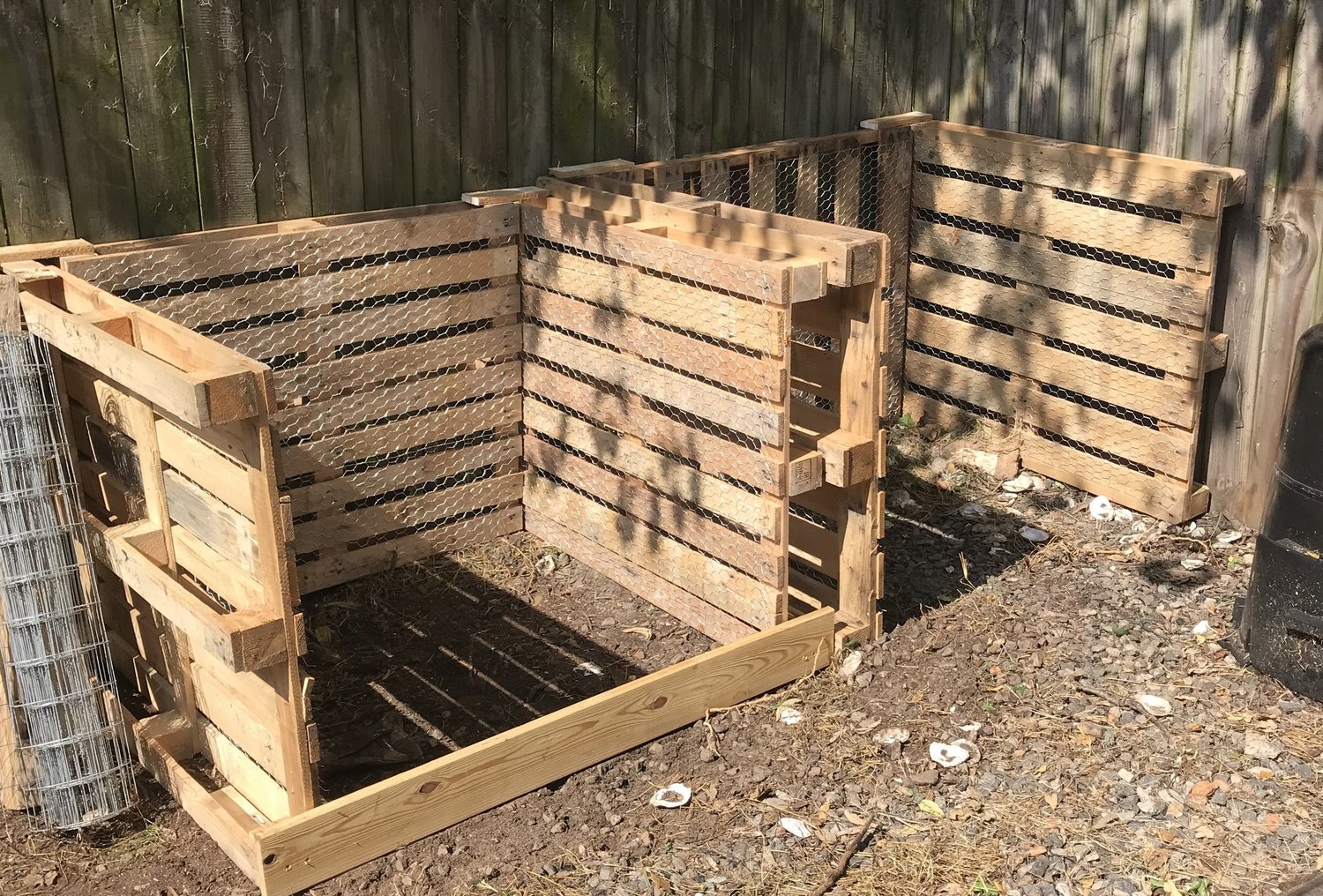
Source Image: www.kitchenplot.com
Designing Your Compost Bin
Once you have your pallets, it’s time to design your compost bin. The design will depend on your garden space and composting needs.
Basic Compost Bin Designs
There are various designs to choose from, each with its own benefits:
- Single Bin: Simple and easy to construct, suitable for small gardens.
- Multiple Bins: Allows for continuous composting; while one bin is being filled, the other can be left to mature.
- With Lids and Doors: Helps keep pests out and retain moisture.
| Design | Description |
|---|---|
| Single Bin | Simple, easy to construct, suitable for small gardens. |
| Multiple Bins | Allows for continuous composting; one bin fills while the other matures. |
| With Lids and Doors | Keeps pests out and retains moisture. |
Tools and Materials Needed
Gather all necessary tools and materials before starting your compost bin project.
| Tool/Material | Purpose |
|---|---|
| Pallets | Main structure for the compost bin. |
| Screws/Nails | Fastening the pallets together. |
| Hammer/Drill | Essential for assembling the bin. |
| Saw | Cutting pallets to size if necessary. |
| Safety Gear (Gloves, Goggles) | Protects hands and eyes during construction. |
Essential Tools for Assembly
Having the right tools makes the assembly process smoother and safer.
- Hammer/Drill: For fastening the pallets.
- Saw: For cutting pallets to fit.
- Safety Gear: Gloves and goggles to protect your hands and eyes.
Additional Materials for Stability
Additional materials can help stabilize your compost bin:
- Corner Braces: For extra support.
- Wood Screws: For stronger connections.
- Ground Stakes: To anchor the bin to the ground.
| Material | Purpose |
|---|---|
| Corner Braces | Provides extra support for the structure. |
| Wood Screws | Ensures stronger connections between pallets. |
| Ground Stakes | Anchors the bin to the ground for stability. |
Safety Equipment and Precautions
Always prioritize safety by using appropriate gear and following safety precautions.
- Gloves: Protect hands from splinters and sharp edges.
- Goggles: Shield eyes from dust and debris.
- Proper Footwear: Prevents injuries from dropped tools or materials.
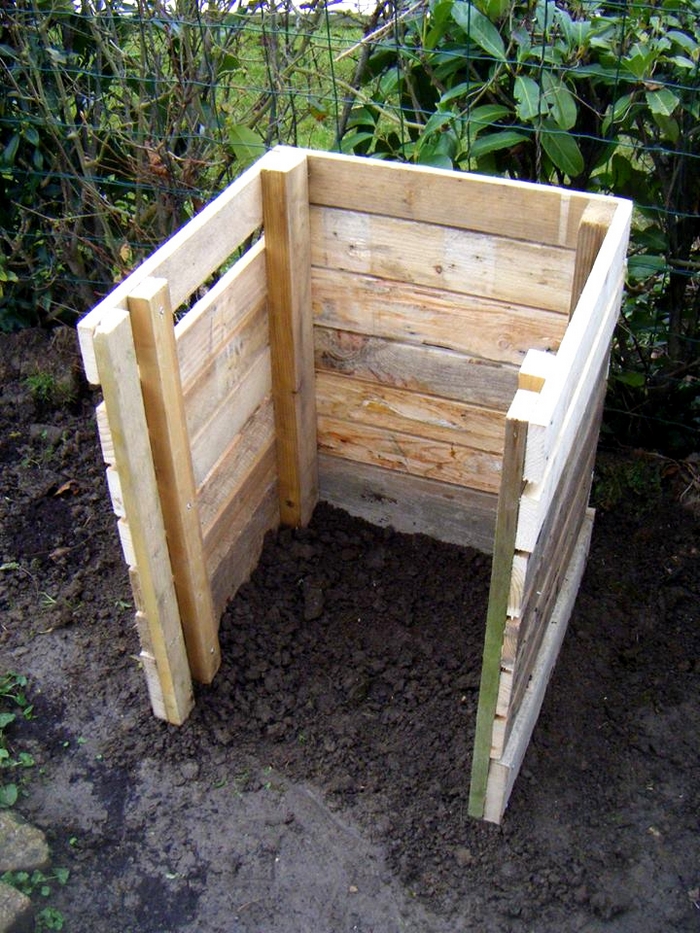
Source Image: project.theownerbuildernetwork.co
Repurposed shipping pallets for compost bins
Step-by-Step Assembly Guide
Now, let’s dive into assembling your pallet compost bin.
Preparing the Pallets
Ensure your pallets are clean and in good condition. Sand any rough edges to avoid splinters.
| Step | Description |
|---|---|
| Cleaning | Remove dirt and debris from pallets. |
| Sanding | Smooth rough edges to prevent splinters. |
| Inspection | Check for damage and remove any nails or screws. |
Constructing the Frame
Build the frame by standing the pallets on their sides and securing them with screws or nails.
| Step | Description |
|---|---|
| Positioning | Stand pallets on their sides to form the frame. |
| Securing | Use screws or nails to fasten the pallets together. |
| Reinforcing | Add corner braces for additional stability. |
Adding Supports and Reinforcements
For a sturdy structure, add extra supports and reinforcements.
| Step | Description |
|---|---|
| Supports | Add additional wood pieces for stability. |
| Reinforcements | Use corner braces and extra screws for strength. |
| Anchoring | Secure the bin to the ground with ground stakes. |
Location and Placement
Choosing the right location for your compost bin is crucial for efficiency and convenience.
Choosing the Best Spot for Your Compost Bin
Consider factors like sunlight, drainage, and accessibility when selecting a location.
| Factor | Consideration |
|---|---|
| Sunlight | Partial sunlight is ideal to maintain warmth without drying out. |
| Drainage | Ensure the area has good drainage to prevent waterlogging. |
| Accessibility | Place the bin where it’s easy to add materials and turn the pile. |
Integrating the Bin into Your Garden Layout
Think about how the compost bin fits into your overall garden design. It should be functional yet unobtrusive.
| Step | Description |
|---|---|
| Placement | Integrate the bin into a convenient yet discrete part of the garden. |
| Design | Ensure the bin complements your garden layout and aesthetic. |
| Pathways | Create clear paths for easy access to the bin. |

Source Image: www.pinterest.co.kr
Starting Your Compost Pile
With your bin ready, it’s time to start composting.
Basics of Composting
Composting involves breaking down organic materials into nutrient-rich soil.
| Component | Description |
|---|---|
| Green Materials | Nitrogen-rich items like grass clippings and vegetable scraps. |
| Brown Materials | Carbon-rich items like leaves and straw. |
| Moisture | Water to maintain the right moisture level. |
| Aeration | Turning the pile to provide oxygen. |
Layering Green and Brown Materials
Create alternating layers of green and brown materials for balanced composting.
| Layer | Description |
|---|---|
| Green Layer | Add a layer of nitrogen-rich green materials. |
| Brown Layer | Follow with a layer of carbon-rich brown materials. |
| Repeat | Continue alternating layers until the bin is full. |
Maintaining Proper Moisture and Aeration
Keep the compost pile moist and well-aerated for optimal decomposition.
| Task | Description |
|---|---|
| Watering | Add water to keep the pile as moist as a wrung-out sponge. |
| Turning | Turn the pile regularly to provide oxygen and speed up decomposition. |
Managing and Turning Compost
Proper management ensures efficient composting.
Techniques for Turning the Pile
Turn the pile regularly to aerate it and speed up the composting process.
| Technique | Description |
|---|---|
| Manual Turning | Use a pitchfork or shovel to turn the pile. |
| Aeration Tools | Use a compost aerator tool for easier turning. |
| Frequency | Turn the pile every 1-2 weeks. |
Tools for Efficient Compost Management
The right tools make compost management easier.
| Tool | Purpose |
|---|---|
| Pitchfork | Ideal for turning the compost pile. |
| Compost Aerator | Helps aerate the pile with less effort. |
| Moisture Meter | Ensures the compost pile maintains the correct moisture level. |
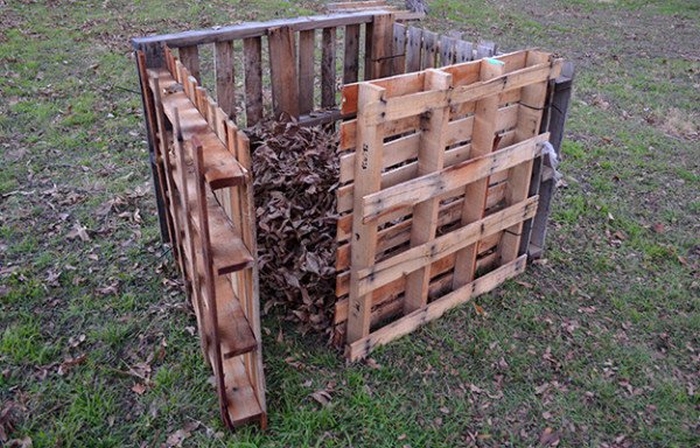
Source Image: project.theownerbuildernetwork.co
Troubleshooting Common Issues
Composting can come with challenges, but they’re manageable with a bit of know-how.
Identifying and Fixing Odor Problems
A smelly compost pile usually indicates an imbalance.
| Problem | Cause | Solution |
|---|---|---|
| Foul Odor | Too much green material | Add more brown material and turn the pile. |
| Ammonia Smell | Excess nitrogen | Add brown materials like leaves or straw. |
Managing Pests and Rodents
Keep pests at bay with proper bin maintenance.
| Problem | Cause | Solution |
|---|---|---|
| Rodents | Food scraps exposed | Bury food scraps and cover with brown materials. |
| Insects | Overly moist pile | Turn the pile and add dry brown materials. |
Addressing Compost Pile Imbalances
Imbalances can slow down composting.
| Problem | Cause | Solution |
|---|---|---|
| Slow Decomposition | Lack of nitrogen | Add more green materials like grass clippings. |
| Dry Pile | Insufficient moisture | Add water and turn the pile. |
Seasonal Composting Tips
Composting can vary with the seasons. Here’s how to manage it year-round.
Composting in Different Climates
Adapt your composting practices to your local climate.
| Climate | Tip |
|---|---|
| Cold Climate | Insulate the bin with straw or leaves. |
| Hot Climate | Keep the pile moist and turn frequently. |
| Humid Climate | Ensure good aeration to prevent excess moisture buildup. |
Winter Composting Strategies
Composting doesn’t have to stop in winter.
| Strategy | Description |
|---|---|
| Insulation | Use straw or leaves to insulate the bin. |
| Smaller Batches | Compost in smaller, more manageable batches. |
| Indoor Composting | Use a worm bin or indoor composter for kitchen scraps. |
Summer Heat and Moisture Management
Manage your compost pile in hot weather.
| Tip | Description |
|---|---|
| Watering | Water the pile more frequently to maintain moisture. |
| Shade | Place the bin in a shaded area to prevent it from drying out. |

Source Image: prodigalpieces.com
Repurposed shipping pallets for compost bins
Harvesting Finished Compost
Knowing when and how to harvest compost is crucial for its effective use.
Recognizing Ready-to-use Compost
Finished compost is dark, crumbly, and has an earthy smell.
| Sign | Description |
|---|---|
| Color | Dark brown or black. |
| Texture | Crumbly and soil-like. |
| Smell | Earthy and pleasant. |
Techniques for Harvesting Compost
Harvest compost efficiently for the best results.
| Technique | Description |
|---|---|
| Screening | Use a screen to separate large, unfinished materials. |
| Shoveling | Shovel compost into a wheelbarrow for transport. |
| Sifting | Sift compost to remove any remaining large pieces. |
Storing and Using Compost in the Garden
Proper storage and application maximize the benefits of your compost.
| Task | Description |
|---|---|
| Storage | Store compost in a covered bin to keep it dry and protected. |
| Application | Use compost as mulch, soil amendment, or in potting mixes. |
| Timing | Apply compost in early spring or fall for best results. |
Maintaining Your Pallet Compost Bin
Regular maintenance ensures the longevity and efficiency of your compost bin.
Regular Inspections and Repairs
Check your compost bin regularly for any damage or wear.
| Task | Description |
|---|---|
| Inspections | Check for signs of rot, loose screws, or broken wood. |
| Repairs | Fix any issues immediately to prevent further damage. |
| Cleaning | Clean the bin annually to remove buildup and debris. |
Protecting the Wood from Rot
Extend the life of your compost bin by protecting the wood.
| Method | Description |
|---|---|
| Sealant | Apply a non-toxic wood sealant to protect against moisture. |
| Elevation | Keep the bin off the ground to prevent direct soil contact. |
| Covering | Use a lid or tarp to shield the bin from rain. |
Long-term Care for Your Compost Bin
Proper long-term care will keep your compost bin in good condition for years.
| Task | Description |
|---|---|
| Seasonal Checks | Inspect and repair the bin at the start of each season. |
| Reinforcement | Add extra braces or supports if needed over time. |
| Treatment | Reapply sealant every few years to maintain protection. |

Source Image: www.pinterest.com
Creative Upcycling Ideas
Beyond compost bins, there are many other ways to upcycle shipping pallets in your garden.
Additional Uses for Shipping Pallets in the Garden
Shipping pallets can be used to create a variety of garden structures and features.
| Project | Description |
|---|---|
| Raised Beds | Build raised garden beds for easier planting and harvesting. |
| Garden Furniture | Create benches, tables, or garden shelves. |
| Vertical Gardens | Use pallets to create vertical garden structures for small spaces. |
Building Raised Beds and Garden Furniture
Pallets are perfect for building raised beds and durable garden furniture.
| Project | Description |
|---|---|
| Raised Beds | Construct raised beds to improve soil drainage and reduce weeds. |
| Benches | Build sturdy benches for seating areas in your garden. |
| Tables | Create outdoor tables for dining or potting plants. |
DIY Projects Using Pallets
Get creative with DIY projects to enhance your garden.
| Project | Description |
|---|---|
| Planters | Build unique planters for flowers or herbs. |
| Compost Sifter | Make a sifter to screen finished compost. |
| Tool Rack | Create a rack to organize garden tools. |
Community and Educational Benefits
Upcycling projects can also benefit your community and provide educational opportunities.
Sharing Upcycling Knowledge
Spread the word about the benefits of upcycling in gardening.
| Activity | Description |
|---|---|
| Workshops | Host workshops to teach others about upcycled gardening. |
| Demonstrations | Provide live demonstrations of building projects. |
| Social Media | Share tips and projects on social media platforms. |
Hosting Workshops and Demonstrations
Engage your community with hands-on workshops and demonstrations.
| Event | Description |
|---|---|
| Workshop | Organize events to build compost bins or other garden projects. |
| Demonstration | Show how to assemble and use upcycled garden items. |
| School Programs | Introduce upcycling projects in school gardening programs. |
Promoting Sustainable Practices in Your Community
Encourage sustainable practices through community involvement.
| Initiative | Description |
|---|---|
| Community Garden | Establish a garden where everyone can participate. |
| Recycling Drives | Organize events to collect and repurpose materials. |
| Green Projects | Collaborate on projects that promote environmental sustainability. |
By incorporating upcycled gardening into your routine, you can create a beautiful, sustainable garden while also contributing to the well-being of the planet and your community. So, gather those shipping pallets and start your eco-friendly gardening journey today!

